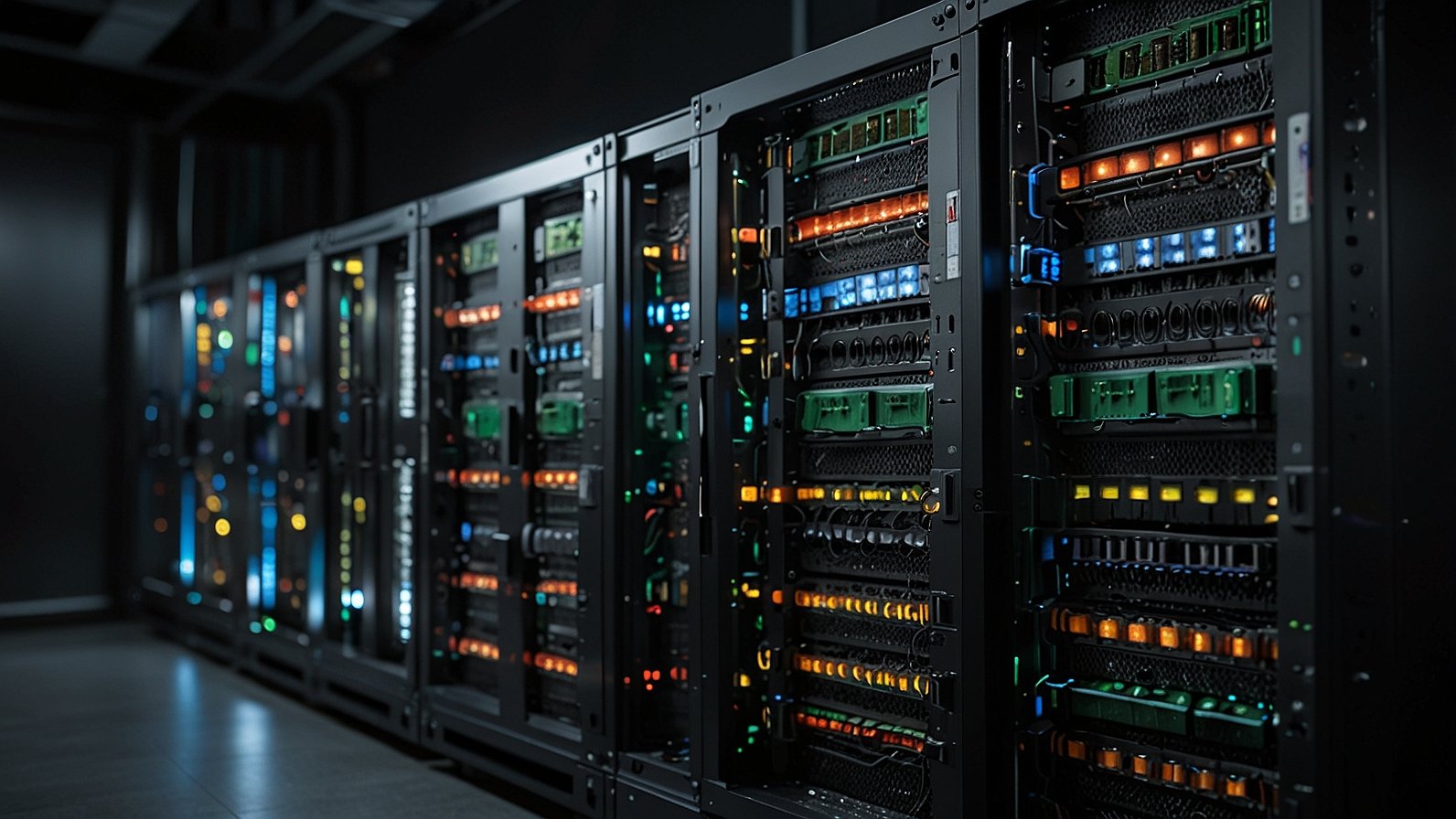What if your data processing system didn’t just compute information but anticipated it? In the high-stakes world of industrial automation, scientific research, and real-time analytics, speed isn’t just a feature—it’s the entire game. At the heart of this revolution lies specialized hardware, engineered for one purpose: relentless, flawless execution.
Enter the CFLOP-Y44551/300. This isn’t your average off-the-shelf component. It’s the silent, powerful engine inside systems that demand more—more speed, more reliability, and more intelligent processing. Think of it as the Formula 1 racing engine compared to a standard family car engine; both are powerful, but one is built for a specific, extreme purpose.
This article will break down everything you need to know about this formidable piece of tech, why it matters, and how it’s shaping the future of compute-intensive industries.
Why the CFLOP-Y44551/300 is a Benchmark in Modern Computing
In a digital era flooded with generic hardware, the CFLOP-Y44551/300 stands out by doing less, better. Instead of being a jack-of-all-trades, it’s a master of one: delivering staggering computational density for specific, complex tasks.
Its core value lies in its specialized architecture. While a standard CPU is designed to handle a little bit of everything (from opening your web browser to running a spreadsheet), a module like the Y44551/300 is often built on ASIC (Application-Specific Integrated Circuit) or highly optimized FPGA technology. This means its internal layout is physically designed to excel at a narrow set of instructions, like:
- Massive parallel processing
- Real-time sensor data analysis
- Advanced cryptographic functions
- Machine learning inference
This focus translates to unbelievable efficiency, lower power consumption per operation, and blazing-fast speeds that general-purpose hardware can’t touch.
Breaking Down the Key Specifications (And What They Actually Mean)
Before we get too deep, a critical reminder: always confirm the exact technical specifications from the official vendor datasheet before integration. The following is a general overview based on common applications for a module of this class.
Think of specs as a component’s personality traits. They tell you how it will behave under pressure. Here’s what you’d typically find on a spec sheet for the CFLOP-Y44551/300:
| Specification | Typical Benchmark (Est.) | Translation for Everyday Folks |
|---|---|---|
| Processing Core | Multi-core Array (e.g., 16+ cores) | Like having a 16-lane highway for data instead of a single country road. |
| Clock Speed | 1.5 – 2.5 GHz (per core) | How fast each car on that highway can legally drive. |
| Thermal Design Power (TDP) | 95W – 125W | How much heat the unit generates, dictating the cooling system you’ll need. |
| Memory Interface | High-Bandwidth (HBM2e) | The size and speed of the on-ramps and off-ramps for that highway. |
| I/O Support | PCIe 4.0 x16, Multi-GigE | How it connects and talks to the rest of the computer system. |
| Operating Temp | 0°C to 70°C (or wider) | Where you can actually use it (e.g., a chilly server room vs. a hot factory floor). |
Real-World Applications: Where You’ll Find the Y44551/300 in Action
This isn’t theoretical tech. It’s solving real problems today. Companies like Siemens for industrial IoT and Rockwell Automation for control systems utilize similar specialized compute modules to power their solutions.
1. Autonomous Robotics:
A manufacturing robot from Boston Dynamics needs to process LiDAR, camera feeds, and spatial data millions of times a second to navigate a warehouse safely. A module like the Y44551/300 provides the raw, instantaneous processing power to make those split-second decisions.
2. Financial Modeling & Fraud Detection:
Imagine a major bank like JPMorgan Chase running millions of complex market simulations to assess risk. Or, their systems need to analyze thousands of transactions per second to spot fraudulent patterns. Generalized hardware would be overwhelmed. Specialized compute accelerators handle this load with ease.
3. Edge AI and Computer Vision:
A smart city traffic system uses cameras at every intersection. Instead of sending all that video footage to a distant cloud server (which causes latency), the processing happens locally at the “edge.” A CFLOP-Y44551/300 module could be inside each traffic cabinet, analyzing video in real-time to optimize light patterns and reduce congestion.
How to Integrate the CFLOP-Y44551/300 Into Your System Workflow
Integrating a specialized component isn’t like plugging in a USB drive. It requires careful planning. Here’s a simplified roadmap:
- Needs Assessment: Is your application truly bottlenecked by computational power? Profile your software to be sure.
- Vendor Consultation: This is the most important step. Contact the vendor to confirm compatibility, acquire drivers, and access SDKs (Software Development Kits).
- Hardware Integration: Physically install the module into the appropriate slot (like PCIe) on your motherboard or dedicated chassis.
- Software & Driver Setup: Install the necessary low-level drivers to allow your operating system to communicate with the hardware.
- Application Optimization: Tweak your software code to leverage the unique architecture of the module for maximum performance gains.
Common Pitfalls and How to Avoid Them
Even experts can stumble. Here are two big mistakes to watch for:
- Underestimating Cooling Needs: A component this powerful generates significant heat. Slapping it into a poorly ventilated case is a recipe for thermal throttling (where it slows down to avoid melting) or failure. Invest in a robust active cooling solution.
- Assuming Plug-and-Play: The software side is often the biggest hurdle. Budget time for your development team to learn the new architecture and optimize code accordingly. It’s not instant magic.
Conclusion: Your Next Steps Toward Unmatched Performance
The CFLOP-Y44551/300 represents the cutting edge of applied computing. It’s the key that unlocks new possibilities in AI, data science, and automation, turning impossible tasks into routine operations.
Your 3 takeaways today are:
- Identify the Need: Don’t invest in specialized hardware without a proven computational bottleneck.
- Trust the Datasheet: Always get specs and documentation directly from the official vendor to avoid costly integration errors.
- Plan for the Whole Ecosystem: Remember that hardware is only half the battle—software, cooling, and power are just as critical.
Is your project being held back by the limits of standard computing? What kind of data problem could you solve with this level of power?
You May Also Read: Deep Dive into jkuhrl-5.4.2.5.1j Model
FAQs
Is the CFLOP-Y44551/300 a CPU or a GPU?
It’s neither in the traditional sense. It’s likely a specialized compute accelerator, often based on ASIC or FPGA technology, designed for a specific type of high-performance computing task rather than general-purpose processing.
Can I use this module in a standard desktop PC?
It depends on its form factor. If it uses a standard PCIe interface, it might physically fit. However, you will need specialized drivers, compatible software, and, crucially, a power supply and cooling system capable of handling it, which most desktop PCs are not equipped for.
Where can I officially buy the CFLOP-Y44551/300?
Components of this nature are typically not sold through consumer retail channels. You would need to contact the manufacturer or an authorized industrial/enterchnology distributor directly for quoting and procurement.
How does it compare to a high-end consumer GPU from NVIDIA or AMD?
A consumer GPU is a generalized parallel processor good for many tasks (gaming, rendering, some AI). The Y44551/300 is purpose-built. For its specific tasks, it will be vastly more efficient and powerful. For general tasks, a consumer GPU would likely be more compatible and cost-effective.
What does “CFLOP” in the name stand for?
While vendor naming conventions vary, it almost certainly references a performance metric, likely “TeraFLOPS” or “PetaFLOPS” (Floating Point Operations Per Second), which measures computational speed. The “Y44551/300” then denotes the specific model and revision.
What kind of software is needed to program it?
You typically use the vendor’s proprietary Software Development Kit (SDK) and low-level programming frameworks like OpenCL, CUDA (if applicable), or specific HDL (Hardware Description Language) tools to leverage its full potential.
Is this technology new?
The trend toward specialized hardware accelerators (as opposed to only relying on general-purpose CPUs) is a dominant and growing trend in computing. While the specific model may be new, the underlying concept is a cornerstone of modern high-performance computing.










